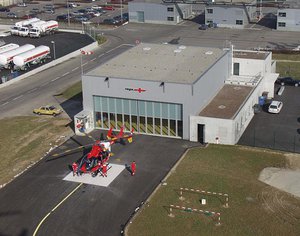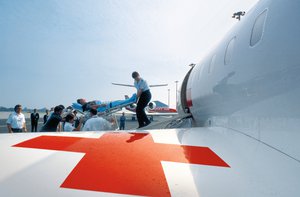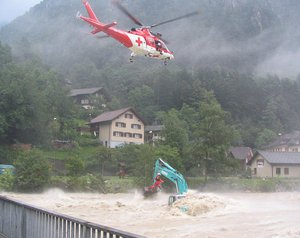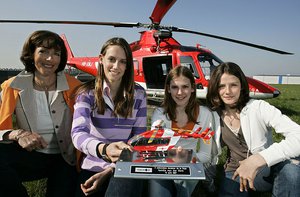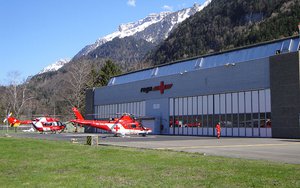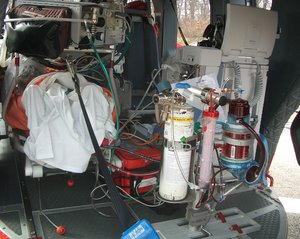4 February: For the first time, Rega transports a seriously ill patient attached to a so-called «life box», a heart-lung machine, in a rescue helicopter.
11 June: After the new rescue helicopter, the AgustaWestland Da Vinci, is presented to the public at the manufacturing plant in Vergiate, Italy in March 2009, the first of a total of 11 new helicopters, the HB-ZRZ, is delivered to the Rega Center. The hand-over of the new helicopters to each of the helicopter bases takes place in a special ceremony, with Open Days organised for the general public.
27 October: For the first time, a «life box» is used on board an air-ambulance: during the night of 26 October, Rega, supported by a team of heart surgeons from the Heart and Neurological Center in Kreuzlingen on Lake Constance, transfers a seriously-ill patient from Croatia to Cologne (Germany).
29 October: The first patient flight and at the same time the first rescue hoist operation with the Da Vinci rescue helicopter: using the horizontal net, the crew from the St. Gallen helicopter base rescue an injured person from steep terrain between Schwägalp and the Säntis mountain.
6 November: After days spent renovating and moving premises, the day has finally arrived: the crew from the Lausanne helicopter base take off in the EC 145 HB-ZRB on their first mission from their new building. The «temporary» arrangement that had lasted for 30 years had at last come to an end.
6 December: Rega’s partner base in Zweisimmen is transformed into a fully-fledged Rega helicopter base. Already on the previous day, the Agusta A 109 K2, with the registration HB-XWB, had carried out a mission as «Rega 14».

